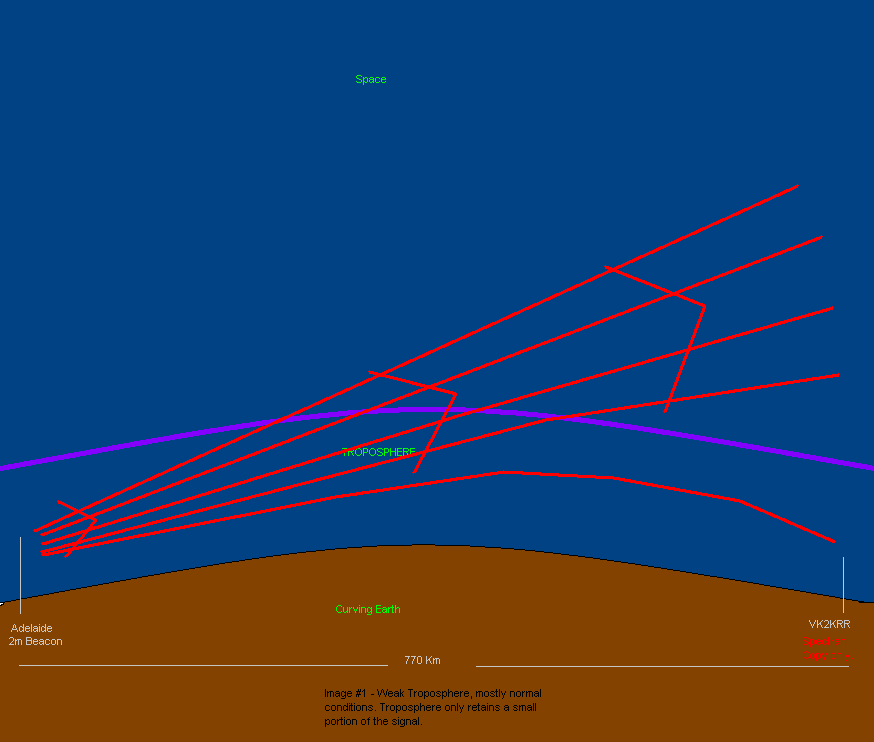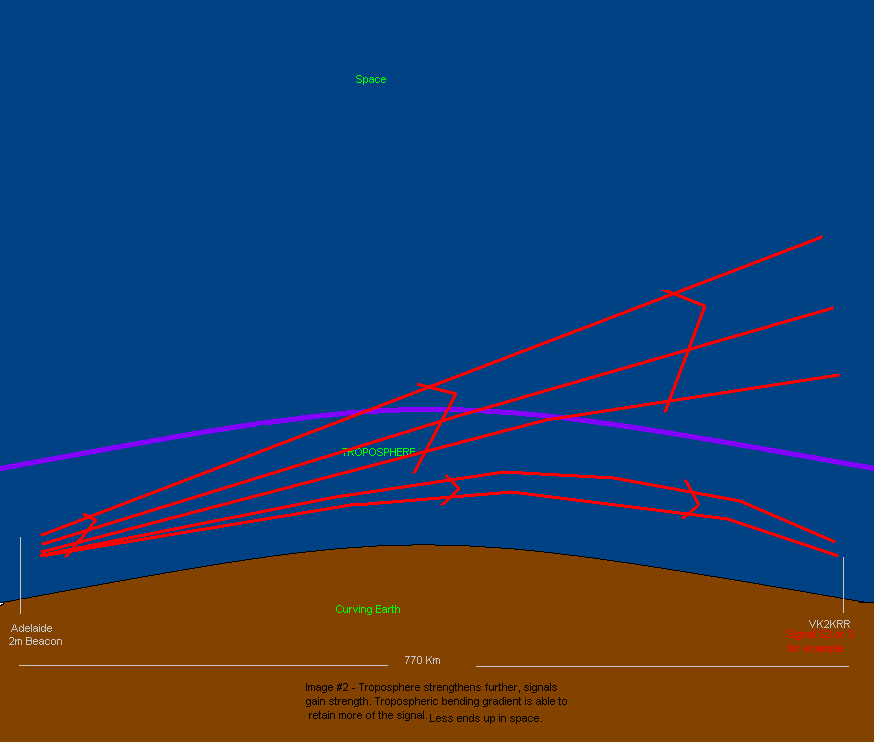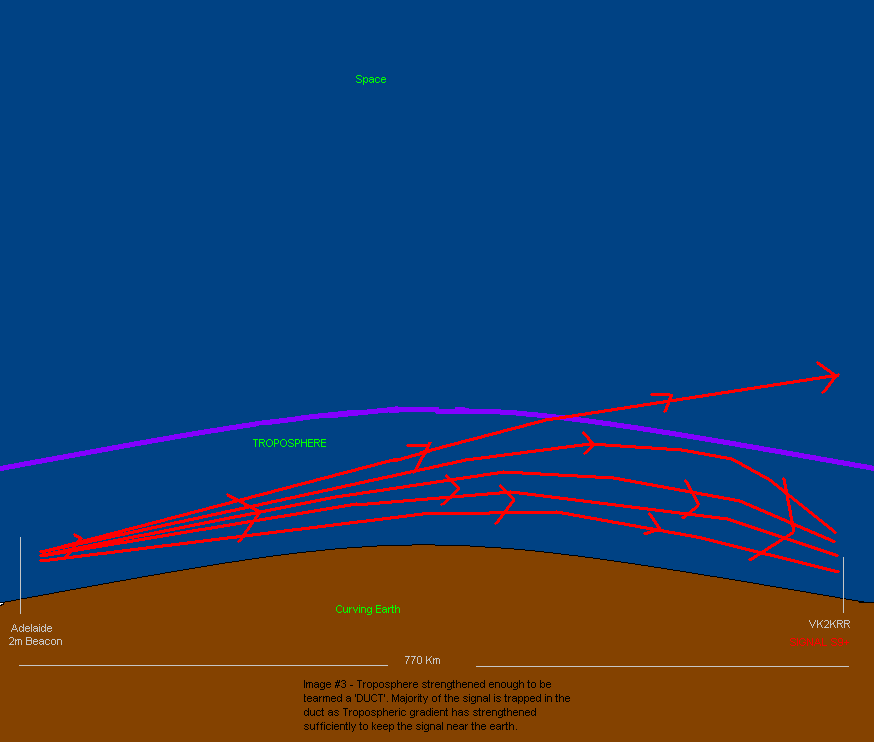
Disputing Tropospheric Scatter theory as being Tropospheric Trapping
By Leigh VK2KRR
I have always had my doubts about so called 'Tropo Scatter'. Being in one of the best locations for studying Tropospheric Propagation in the world, I will put forward my thoughts on what is really happening.
Basically, from what I have observed, the ever changing state of the troposphere and its ability to trap radio frequency energy is the real mechanism that causes what most believe to be 'Tropo Scatter'. I believe this Tropo Scatter theory to be incorrect. I would prefer to call the process Tropospheric Trapping.
We often hear many commenting that the VHF+ bands are 'dead', or there is no propagation. As far as I am concerned, the bands are never dead. The troposphere just varies in its refractive gradient all the time and this governs the loss ratio of signal into space and the amount that is trapped and propagated near the earth surface.
Tropo Scatter History
Its long been accepted that VHF+ signals are propagated in down times, by a method commonly referred to as 'Tropo Scatter'. Where theories indicate that the VHF signal is 'scattered' or 'reflected' by a irregular area in the upper troposphere, near the tropopause (maybe 10 Km up). Two distant stations then each aim at a 'common volume' of the troposphere and may hear very weak signals being reflected.
If true scattering is occuring, in theory people should be able to aim at the common volume who may be 90 deg apart, on nulls of each antenna in direct line of sight, and should still be able to get the same signals. Similar to aiming at an Aurora. BUT NO this does not happen.
See the Radio & Electronics page on Tropo Scatter for further reading and diagrams.
Tropospheric Trapping - What is really happening
The Troposphere is ever changing, even when there is a tropo duct, its still changing all the time. So in very simple terms, 'Tropo Scatter' is not Tropo Scatter at all, but is simply a weakened Tropospheric duct type state. Meaning that signals are still being DUCTED or trapped in the troposphere, but there is a much higher loss rate than normal into space.
From my own observations here which have lead me to this conclusion, a good example is reception of the Renmark TV transmitter on 143.760 MHz, approx 600 Km away. I can receive signal from this transmitter at all times. Most low signal is around signal strength 2 to 4. Some days it will be S9 and then again some days it will be S9+60dB+. But it doesn't suddenly appear there. The signals build up or slowly go down depending upon the strengthening or weakening of the tropospheric trapping properties.
Similarly the Adelaide VK5VF beacon on 144.450 MHz. Most days is barely visible of Spectrum Lab. Some days its quite visible, others its audible up to S9.
The Troposphere is in a constant state of change due to weather variations. This governs how strong your signal is from TX to RX. Fairly simple really.
Below are some diagrams I have put together to give a visual representation.



As you can see visually in these diagrams, the changing state of the troposphere governs the amount of signal trapped and guided or ducted within. This is constantly varying 24 hours a day. This can be quite easily observed and proven from my QTH.
Leigh Rainbird VK2KRR.